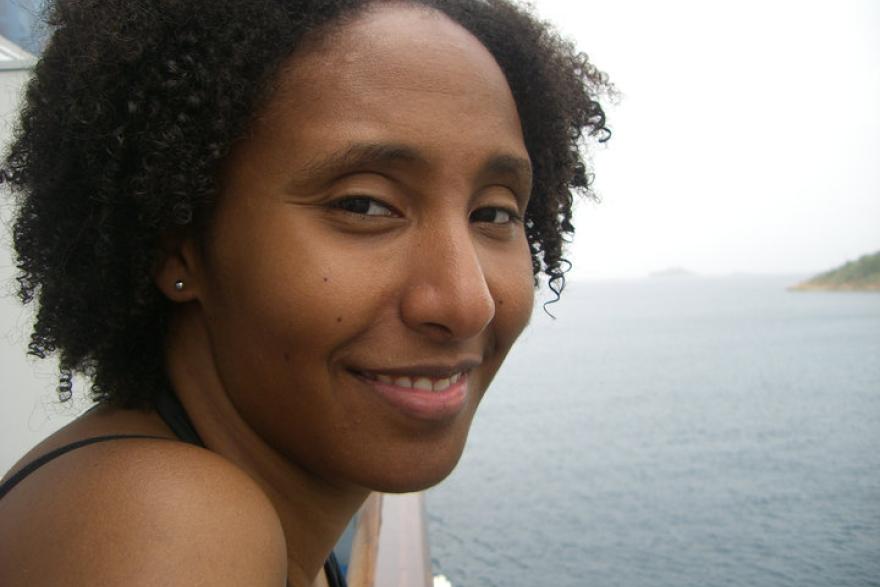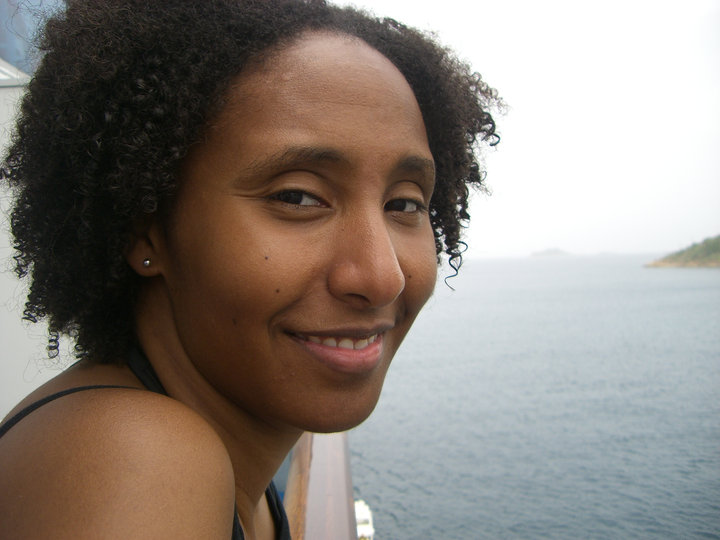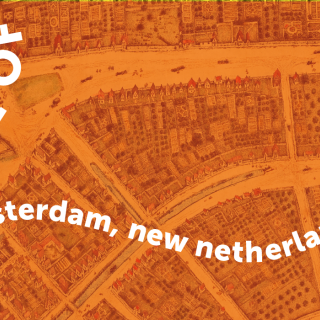Professor Nicole Maskiell

Nicole Maskiell is a historian specializing in family slaveholding networks in Anglo-Dutch colonial America. Dr. Maskiell is an Assistant Professor of History, Director of Public History, and McClausland Faculty Fellow at the University of South Carolina. Her current book project, forthcoming with Cornell University Press in the summer of 2022 is entitled Bound by Bondage: Slavery and the Creation of a Northern Gentry which centers slavery as a crucial component to the rise and enduring influence of the moneyed Northeastern elite. Dr. Maskiell hails from the Midwest but has family ties in upstate New York as well as in the Hudson Valley.
1) What is colonialism and what was its role in New Netherland?
Colonialism is the process by which one culture transplants its population, economy, beliefs, built, and ecological environment to claim ownership or territory over a previously foreign area. New Netherland was a small part of a global Dutch empire, which was colonized by two major companies – the Dutch East India and the Dutch West India company. These companies were run by a board of directors, staffed by a multi-layered team of administrators, and invested in by everyday Dutch citizens. The Dutch East India Company was by far the most lucrative of the two. The Dutch West India Company (WIC) was run by a board known as the Heren 19, and they oversaw the colonization of western African forts, Brazil, colonies along the South American coast referred to as the Wild Coast, as well as the Southern Caribbean islands of Curaçao, Aruba, and Bonaire, and New Netherland.
In New Netherland, the Dutch West India Company was the main employer and the primary means by which the Dutch Republic colonized the region, but private citizens and immigrants from other parts of Europe migrated to the area as well. Wealthy Dutch people were offered incentives to emigrate in the form of large land grants known as patroonships, which were intended to be worked by a mixed labor force including tenant, servant, and enslaved people. Despite such plans, only one of these patroonships survived to be financially viable: the sprawling patroonship of Rensselaerswyck (part of present-day Albany) in Northern New Netherland. New Netherland was largely administered by a company, and “ruled” by a series of governors referred to in the documents as Directors or Director-Generals, who were employees of the Dutch West India Company. Private settlers from many diverse places such as Brazil, Scandinavia, the British Isles, and Africans and African-descended people from Senegambia, the Caribbean, and Angola settled in New Netherland.
2) What was unique about the institution of slavery in the Dutch Atlantic world? How would you describe the nature of freedom and enslavement for Africans in New Netherland in terms of its boundaries and fluidity? What was the process and means of negotiating power and freedom in the Dutch West India Company?
Slavery in the Dutch Atlantic world was not governed by a set of laws like those of the English, Spanish, and Portuguese. Scholars have argued that this created, in the early years, a pathway to negotiating freedoms for a certain group of largely company-owned enslaved people, such as access to the courts, church, and even manumission. Recent work has placed this system within the wider framework of the global Dutch empire and found that such access was not a feature of benevolence in New Netherland, -but the way that the company created a tiered system within the community of enslaved people-both in New Netherland and elsewhere. This system engendered a certain level of loyalty among the enslaved, a group of people that the company used to claim the land in the face of low European settler numbers.
Some formerly company-owned enslaved people were able to negotiate freedom for themselves, and, later on, secured that free status for their families. They owned land in the community and had weddings and baptisms performed in the Dutch Reformed Church. This unprecedented access to written records has allowed historians to recreate connections between African and African- descended denizens of New Amsterdam. Historian, Andrea Mosterman has shown that, at least in New Amsterdam, such freedoms might have been the result of physical proximity; many of the enslaved people lived within walking distance of the church, courts, and taverns.
While such stories can shed light on the unique experiences of some enslaved people, the lion's share of New Netherland’s enslaved population—a mixed group of African, African- descended, and Native people--did not enjoy such access, and lived lives of privation, toil, and degradation. Community building and access varied in other settlements within the Dutch colony, and the experiences of enslaved people were vastly different between those owned by the Dutch West India Company and others held by private individuals. The enslaved suffered the loss of lives torn apart by sale—sometimes at public auction—and were assigned jobs so grueling they were given as punishments to the settlements’ white residents. The liberties of manumitted people were limited by the whims of others, and they could be re-enslaved as a punishment for a crime or in failing to meet the conditions of their freedom, such as paying a certain amount of the proceeds of their harvest.
3) How did Black people build and sustain communities and social ties in New Netherland?
Black people used several avenues to build and sustain communities and social ties in New Netherland. In New Amsterdam, social relationships were forged by proximity. In Rensselaerswyck and Beverwijck (modern day Albany and its surrounding areas), the enslaved lived and worked in mixed labor households that included servants, while those enslaved in other settlements such as those in Schenectady, Long Island, and Wiltwijck (modern-day Kingston), lived more isolated lives but still carried knowledge of the possibility for connection in other communities.
Some enslaved couples were sold together, a feature of bondage in the Dutch colony that scholars once used to point to the kinder nature of enslavement in New Netherland, but have recently been re-evaluated to highlight the importance of gendered relationships in working the land and colony survival. In the West Central African societies from which many of the enslaved hailed, women -maintained garden plots and men had knowledge of keeping pasture, key skills that were deployed both in New Amsterdam and, under the directorship of Petrus Stuyvesant, in the Dutch empire’s southernmost reach: the island of Curacao (located just north of modern-day Venezuela). Legal codes were passed to protect the garden plots of the enslaved, and at least two couples recorded in existing documents as traded had their production skills highlighted—Lucia and Joseph, referred to in the documents as “her husband”, were sent down from New Amsterdam to Curacao to tend cattle at pasture, and the planting skills of an unnamed enslaved woman was highlighted by Petrus Stuyvesant when he sold her and her partner to Jeremias van Rensselaer.
Archaeological discoveries and other archival records have uncovered that Black people shared moments of joy together—playing dice, celebrating holidays such as Pinkster or gathering at the tavern. They deployed naming to mark out relationships between one another—naming their children after prominent members in the community, retaining place histories as evidenced by the surname Angola or Kongo, using ties of blood or adoption to pass down relationships and, in the case of Reytory Angola as well as other free Black men and women, land. They chose prominent members of their communities to serve as baptismal witnesses and sometimes even chose members of the white community, such as merchants, ministers, and in the case of at least one group of enslaved children, Judith Stuyvesant, the Director General’s wife. Some marriages were officially recognized in the Dutch Reformed Church, with several couples choosing to wed at places of deep personal, familial, and historical importance to their communities, such as the chapel erected on Petrus Stuyvesant’s bouwerijs (boweries or farms).
4) Where did Black people live in New Amsterdam? Were they in the center of the town or on the outskirts? Did this change over time? Why?
In the beginning decades of New Amsterdam, most Black people were owned by the Dutch West India Company and they were housed in a large house next to the Fort. In the decades that followed, they were moved from that location but remained in several key areas throughout the settlement. Fifteen free Black householders were granted parcels of land by Petrus Stuyvesant in 1659 to farm and settle along the wagon road, and several enslaved and free people lived and worked the agricultural farms or bouwerijs that lie just outside of the main area of settlement.
As was mentioned previously, this proximity offered a unique kind of access that afforded some members of the Black community in New Amsterdam access to the church, places of socialization like the tavern, and the courts. With the fall of New Netherland to the English, such access was severely curtailed by several waves of laws that limited the socialization of African and African- descended people, both free and enslaved, as well as slowly eroded the landed footprint of free Black people who had managed to own land in early eras. Yet, such changes were not merely an artifact of a new regime and new transplants from England but were enacted by the descendants of the same Dutch neighbors who had in earlier times lived alongside African and African- descended neighbors in mixed communities, as part of a broader shift towards claiming the land away from Native peoples and claiming ownership over the lives of enslaved people.
5) How did the institution of slavery and Black life differ in New Amsterdam from other parts of the New Netherland colony?
The institution of slavery was unique in New Amsterdam relative to the rest of the New Netherland colony, in that many of the enslaved people in the city were owned directly by the West India Company, while most of those in other parts of the colony were owned by private individuals. This corporate model of slavery set individuals to work on building fortifications, repairing dams and waterways, farming, cleaning, baking, performing skilled labor, and augmenting the defense forces of the town. In fact, Direct General Petrus Stuyvesant specifically requested that strong enslaved individuals be sent to the colony who might be put to work defending it.
In outlying lands, the work was done for the benefit of individual enslavers, and so the work patterns could be more varied in nature. An individual named Andries was held in bondage by Jeremias Van Rensselaer, the Director of Rensselaerswyck (near modern-day Albany) specifically to serve as a horse groom. Another enslaved man, whose name is lost to history, labored at various strenuous tasks for Jeremias.
More individuals in New Amsterdam were granted their freedom than in other parts of the colony as well. Around twenty of the first enslaved men and women in New Amsterdam received their freedom and grants of land along the main bowery (farm) road leading north from the city in 1644, providing that they continued to pay annual duties to the colony upon pain of re-enslavement, and despite the fact that their children were not granted their freedom. This is the condition that has come to be known as half-freedom by many historians. Additional manumissions occurred throughout the Dutch period in New Amsterdam, but few have been recorded in other parts of the colony.
6) What jobs would Black residents of New Amsterdam do? How would this differ for enslaved and free people? How would this differ by gender? Did enslaved people work for themselves at all or only for their enslavers?
Enslaved and free individuals in New Amsterdam worked at a wide and varied set of tasks. Men enslaved by the West India Company were charged with upkeep of the wall and other fortifications, dams, and waterways, as well as farming, animal husbandry, clearing wood, and other labors, including serving with the militia to defend the town from attack. Women were also responsible for farming, along with cleaning, cooking, and domestic functions. Some free people owned land, but as a condition of their continued freedom, were required to pay a tax that historian Susanah Shaw Romney has demonstrated reduced them to subsistence levels of existence. Some enslaved men were paid wages, and others filled jobs that European settlers found distasteful, such as serving as executioners or guard. At least one person received his freedom as a result of such service.
7) Can you tell us about the interactions between the Black and Indigenous communities in New Netherland?
A recent archeological discovery of the body of an African woman among the Seneca is evidence that African and Indigenous contact predated the founding of New Netherland and settlement of the Dutch. The woman’s remains showed evidence of Yaws (a disease common in West Africa) and dating uncovered that she died at the turn of the seventeenth century. Another person, Jan Rodrigues, an Afro-Portuguese mariner, became the first non-Native inhabitant of Manhattan. He forged relationships with the Lenape and intermarried into the community.
Black and indigenous people were both enslaved by European inhabitants of New Netherland and, in the case of the household of Jeremias Van Rensselaer in the northern settlement of Rensselaerswyck, worked alongside one another. But people of African descent were also enslaved by Indigenous groups, such as the Lenape, who traded enslaved Black people with the Dutch. Both Black and Indigenous people were sometimes deployed to track down people accused of running away, as was the case of a group of people who had run away from Long Island. Enslaved Black fighters were used in the wars against the Esopus (a Lenape community who lived on the western banks of the river now known as the Hudson in modern-day Ulster and Sullivan Counties), and to shore up the colony’s fortifications. A group of Esopus fighters and war captives were sent down to Curaçao by Petrus Stuyvesant to labor alongside enslaved Black people as public punishment, part of a regional trend of displacing indigenous people to distant slave markets.
8) How did Black communities in New Netherland remix African, European, and Indigenous cultural traditions?
Black communities in New Netherland reflected a heterogeneous mélange of different cultural traditions. Archaeological research at sites in Long Island, like those done at the Sylvester Manor on Shelter Island, offers a multi-ethnic trove of artifacts from Native and African works that tells a story of mixed labor that is not preserved by the written record. Skilled labor, such as prowess with horse grooming or pasture experience, might reflect origins in African regions such as Senegambia and West Central Africa. Linguistic dexterity appears in early runaway slave advertisements known as hue and cry, which feature self-emancipated people who had a command of European, African, and Native languages such as Mohawk and Mohegan.
Enslaved people handled and traded sewant or wampum, the Native shell beads used as trade items in New Netherland’s marketplace. These beads were most principally used by Native peoples in the construction of ceremonial wampum belts that were central to the region’s diplomacy. Legal statutes, which defined the nonwhite population as a mixed group of ethnically African, European, and Indigenous, reflected the mixture of these three different peoples, and the descendants of such group combined their foodways, religious celebrations, burial practices, and linguistic heritages to create a unique and lasting regional culture.
9) How should we describe the people of the African diaspora in New Netherland? What terms were used in archival sources, what terms were used in previous historical writings, and what terms are used today?
Currently acceptable terms that can be used to describe people of the African diaspora in New Netherland include, African, African-descended, Black (though referring to people as “the blacks” should be avoided), Afro-Dutch, Lusco-African, Creole, and Mixed Race. Specificity should always be favored when possible, so refer to a historical actor by name and their place of origin in Africa specifically, such as the Kongo or Senegambia. Capitalization of Black and Native are standard.
In the archival records a variety of terms are frequently used to describe the people of the African diaspora that are not appropriate or currently used today, such as “Neger” or “Negro.” Other terms such as “slave” versus “enslaved,” “master” or “mistress” versus “enslaver,” have become points of discussion within scholarly circles. All terminology currently used to describe the lives of non-white people should acknowledge the full humanity of the individuals and the worth of their stories.
10) How should we understand silences in the archive? How do historians go beyond these gaps to learn about people whose voices might not have been preserved?
Written documents are the sources that have been most commonly used by historians to construct narratives of the past, but as scholars have pointed out, such documents offer a skewed view of enslaved or marginalized peoples. Oftentimes, existing documents that include evidence of the enslaved or marginalized often contain only a passing mention or highlight them not as human but as objects for sale, items on an inventory, or within the criminal record. That documentary evidence itself was a tool of exploitation and oppression is a truth that historians of slavery continue to balance against the need to use such tools to reconstruct the past.
How then can we reconstruct a meaningful story that foregrounds the experiences of people for whom the archive was not intended? Scholars use different techniques such as reading documents “against the grain” or challenging the perspective of colonists and enslavers who used these documents to present their own perspectives, as well as deploying other modes of analysis such as spatial and archeological means to broaden the source base from which narratives can be constructed.





